The iPhone 5s Review
by Anand Lal Shimpi on September 17, 2013 9:01 PM EST- Posted in
- Smartphones
- Apple
- Mobile
- iPhone
- iPhone 5S
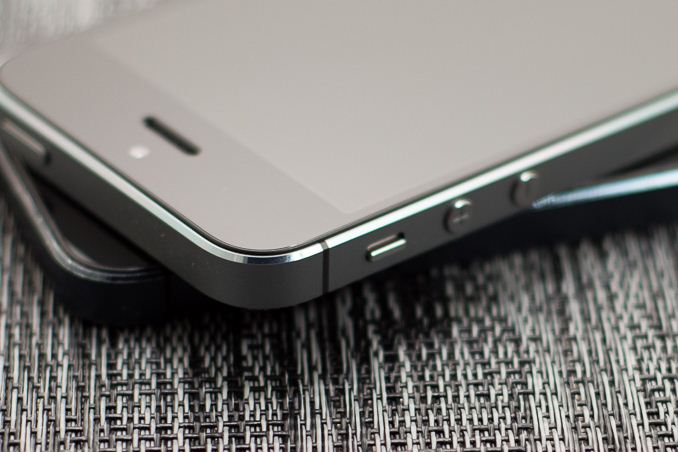
For much of the iPhone's life Apple has enjoyed a first-mover advantage. At the launch of the first iPhone, Steve Jobs expected the device and OS would give it a multi-year head start over the competition. Indeed that's how the market played out. Although Android was met with some early success, it wasn't until well after the launch of the first Android devices that we started seeing broad, mainstream acceptance of the platform. The iPhone bought Apple time, and together with the iPad it brought Apple a tremendous amount of profit over the years. The trick of course is turning a first-mover advantage into an indefinitely dominant market position, a difficult task when you're only making one device a year.
Today we find Apple in a very different position. The iPhone is still loved by a very loyal customer base, but the competition is much stronger than it was back in 2007. The modern smartphone market has also evolved. When Apple introduced the original iPhone with its 3.5" display, Steve called it "giant" on stage. Today even HTC's One mini ships with a 4.3" display.
Last year we saw Apple begin to address the changing landscape with the iPhone 5. The 5 saw Apple moving to a thinner, lighter chassis with much better internals and a significantly larger display. While there is market demand for Apple to do the same again, and move to an even larger display, there are some traditions Apple is sticking to. In this case, it's the tradition of the S-update.
The iPhone 5s continues Apple’s tradition of introducing a performance focused upgrade for the last year of any new chassis design. The first time we encountered an S-update was with the 3GS, which took the iPhone away from its sluggish ARM11 roots and into the world of the Cortex A8.
The next S-upgrade came with the iPhone 4S: Apple’s first smartphone to use a dual-core SoC. At the time I remember debate over whether or not a performance upgrade alone was enough to sell a new device, especially one that didn’t look any different. I’m pretty much never happy with the performance I have, so I eagerly welcomed the new platform. Looking back at the iPhone 4 vs. 4S today, I’d say the investment was probably worth it. In preparation for this review I threw iOS 7 on every iPhone that would support it, dating back to the iPhone 4. In my experience, the 4 is a bit too slow running iOS 7 - the 4S really should be the minimum requirement from a performance standpoint.
That brings us to the iPhone 5s, the third in a list of S-upgrades to the iPhone platform. Like the S-devices that came before it, the iPhone 5s is left in the unfortunate position of not being able to significantly differentiate itself visually from its predecessor. This time around Apple has tried to make things a bit better by offering the 5s in new finishes. While the iPhone 5 launched in silver and black options, the 5s retains silver, replaces black with a new space grey and adds a third, gold finish.
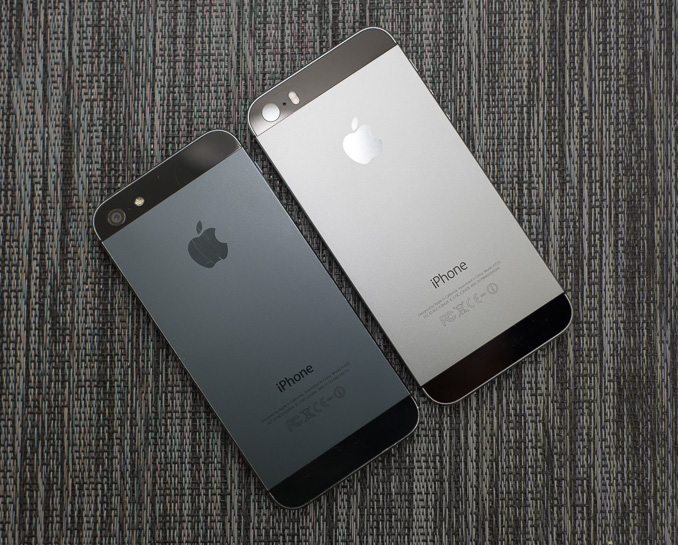
old black iPhone 5 (left) vs. new space grey iPhone 5s (right)
I was sampled a space grey iPhone 5s, which worked out well given my iPhone 5 was black. The new space grey finish is lighter in color (truly a grey rather than a black) and has more prominently colored chamfers. The move to a lighter color is likely to not only offer a little bit of visual differentiation, but also to minimize the appearance of scuffs/scratches on the device. My black iPhone 5 held up reasonably well considering I carry it without a case, but there’s no denying the fact that it looks aged. Interestingly enough, I never really got any scratches on the back of my 5 - it’s the chamfers that took the biggest beating. I have a feeling the new space grey finish will hold up a lot better in that regard as well.
The addition of a gold option is an interesting choice. Brian and I saw the gold iPhone up close at Apple’s Town Hall event and it really doesn’t look bad at all. It’s a very subtle gold finish rather than a gaudy gold brick effect. I think gold is likely the phone I’d opt for simply because it’d be very different than everything else I have, but otherwise space grey is probably the best looking of the three devices to me.
Along with the new finishes come new leather cases to protect the 5s. These cases are designed and sold by Apple, and they are backwards compatible with the iPhone 5 as well. Apple calls them leather cases but I'm not entirely sure if we're talking about real leather here or something synthetic. Either way, the new cases feel great. They've got a very smooth, soft texture to them, and are lined with a suede like material.
The new cases don't add a tremendous amount of bulk to the device either. The cases are available in 5 different colors and retail for $39:
I was sampled a beige case and have been using it non-stop for the past week. I really like the case a lot and it did a great job protecting the 5s over the past week while I was traveling. I took all of the photos of the review device after I returned home from traveling, but thanks to the case the device still looked as good as new. If you're considering one of these cases you might want to opt for a darker color as the edges of my case started to wear from constantly pulling the phone out of my pockets:
If you're fine with the distressed leather look then it's not a concern, but if you're hoping to keep your case pristine you may want to look at other cases. If you want a more affordable & more rugged option, Brian turned me on to the Magpul Field case which should work perfectly with the iPhone 5s.
Since the 5s is an S-upgrade, the chassis remains unchanged compared to the iPhone 5. The 5s’ dimensions are identical to that of the iPhone 5, down to the last millimeter of size and gram of weight. Construction, build quality and in-hand feel continue to be excellent for the iPhone 5s. Despite the diet the iPhone went on last year, the 5/5s chassis is still substantial enough to feel like a quality product. I remember criticisms of the iPhone 5 at launch, saying that it felt too light. Now going back and holding an iPhone 4S, it feels like the very opposite is true - the 4S was too heavy
The iPhone 5s design remains one of the most compact flagship smartphones available. The move to a 4-inch display last year was very necessary, but some will undoubtedly be disappointed by the lack of any further progress on the screen dimension front. A larger display obviously wasn’t in the cards this generation, but I have a strong suspicion Apple has already reconsidered its position on building an even larger iPhone. Part of the problem is the iPhone’s usable display area is very much governed by the physical home button and large earpiece/camera area at the top of the device. Building a larger iPhone that isn’t unwieldy likely requires revisiting both of these design decisions. It’s just too tall of an order for a refresh on the same chassis.
Brian often talks about smartphone size very much being a personal preference, and for many the iPhone 5 continues to be a good target. If you fall into that category, the 5s obviously won’t disappoint. Personally, I would’ve appreciated something a bit larger that made better use of the front facing real estate. The 5s’ width is almost perfect for my hands. I could deal with the device being a little larger, with the ideal size for me landing somewhere between the iPhone 5 and the Moto X.
It remains to be seen the impact display size has on iPhone sales. Anecdotally I know a number of die hard iPhone users who simply want a larger display and are willing to consider Android as a result. I still believe that users don’t really cross shop between Android and iOS, but if Apple doesn’t offer a larger display option soon then I believe it will lose some users not because of cross shopping, but out of frustration.
As a refreshed design, the iPhone 5s carries over all of the innovations we saw in the 5 last year. The iPhone 5s features the same Lightning connector that debuted on the iPhone 5, and has since been extended to the iPad lineup as well as the new iPods.
As with all other S-upgrades, the biggest changes to the iPhone 5s are beneath the aluminum and glass exterior. The 5s’ flagship feature? Apple’s new A7 SoC. The A7 is the world's first 64-bit smartphone SoC, and the first 64-bit mobile SoC shipping in a product (Intel’s Bay Trail is 64-bit but it won’t ship as such, and has yet to ship regardless). In addition to the new 64-bit SoC Apple upgraded both cameras in the iPhone 5s and added a brand new fingerprint sensor called Touch ID. Of course the iPhone 5s is one of the first new iPhones to ship with iOS 7 from the factory.
| Apple iPhone 5 | Apple iPhone 5c | Apple iPhone 5s | |
| SoC | Apple A6 | Apple A6 | Apple A7 |
| Display | 4-inch 1136 x 640 LCD sRGB coverage with in-cell touch | ||
| RAM | 1GB LPDDR2 | 1GB LPDDR3 | |
| WiFi | 2.4/5GHz 802.11a/b/g/n, BT 4.0 | ||
| Storage | 16GB/32GB/64GB | 16GB/32GB | 16GB/32GB/64GB |
| I/O | Lightning connector, 3.5mm headphone | ||
| Current OS | iOS 7 | ||
| Battery | 1440 mAh, 3.8V, 5.45 Whr | 1507 mAh, 3.8V, 5.73 Whr | 1570 mAh, 3.8V, 5.96 Whr |
| Size / Mass | 123.8 x 58.6 x 7.6 mm, 112 grams | 124.4 x 59.2 x 8.97 mm, 132 grams | 123.8 x 58.6 x 7.6 mm, 112 grams |
| Camera |
8MP iSight with 1.4µm pixels Rear Facing 1.2MP with 1.75µm pixels Front Facing |
8MP iSight with 1.4µm pixels Rear Facing 1.2MP with 1.9µm pixels Front Facing |
8MP iSight with 1.5µm pixels Rear Facing + True Tone Flash 1.2MP with 1.9µm pixels Front Facing |
| Price | $199 (16GB), $299 (32GB), $399 (64GB) on 2 year contract | $99 (16GB), $199 (32GB) on 2 year contract | $199 (16GB), $299 (32GB), $399 (64GB) on 2 year contract |
The iPhone 5s also breaks with tradition in a couple of ways. The 5s is the first iPhone in recent history to not be offered up for pre-order. Apple expects demand for the iPhone 5s to severely outstrip supply, and as a result won't be accepting pre-orders on the 5s.
The other big change is what happens to the previous generation iPhone. In the past, Apple would discount the previous generation iPhone by $100 on-contract and continue to sell those devices at low capacity points. A two-generation old iPhone was often offered for free on-contract as well. This time, the iPhone 5s replaces the iPhone 5 at the high end, but the iPhone 5 ceases production. Instead, the 5 is replaced with a cost reduced version (the iPhone 5c). As the glass & aluminum iPhone 5/5s chassis likely doesn't scale well in price, coming up with a new polycarbonate design for slightly lower price points makes sense. I have written a separate piece on the iPhone 5c as I have more than enough to talk about with the iPhone 5s in this review.
I'll start with the big ticket item: Apple's 64-bit A7 SoC.


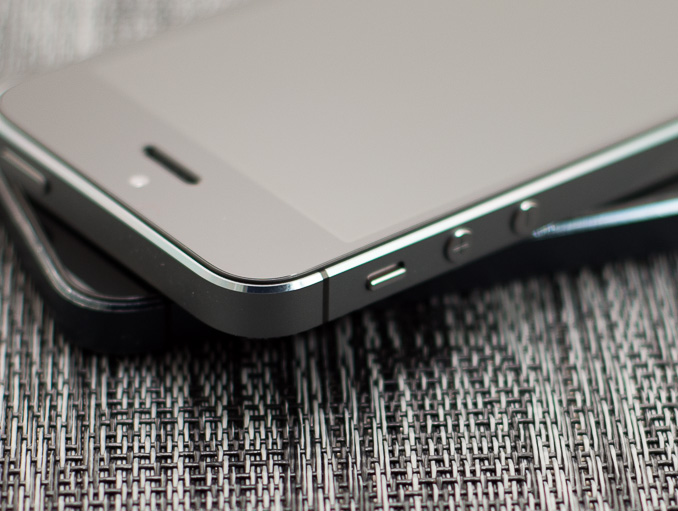
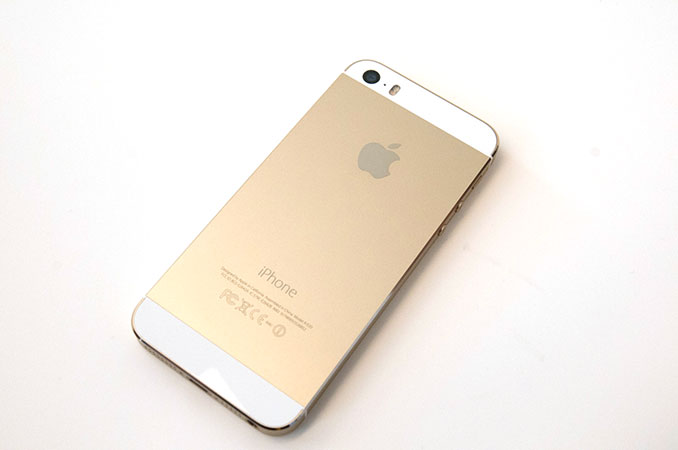
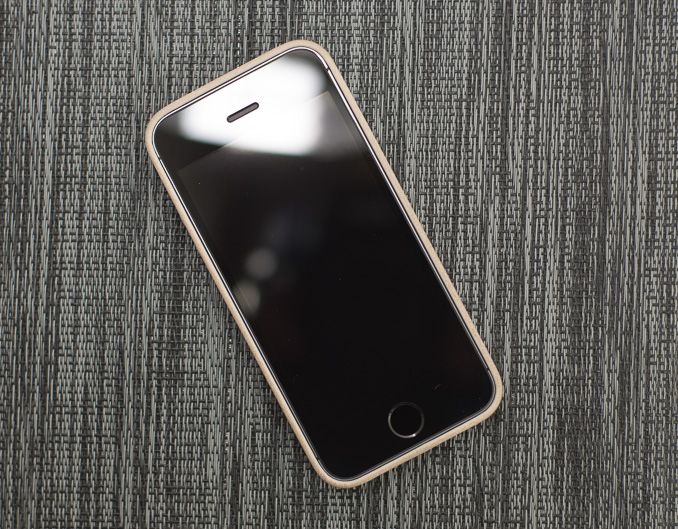
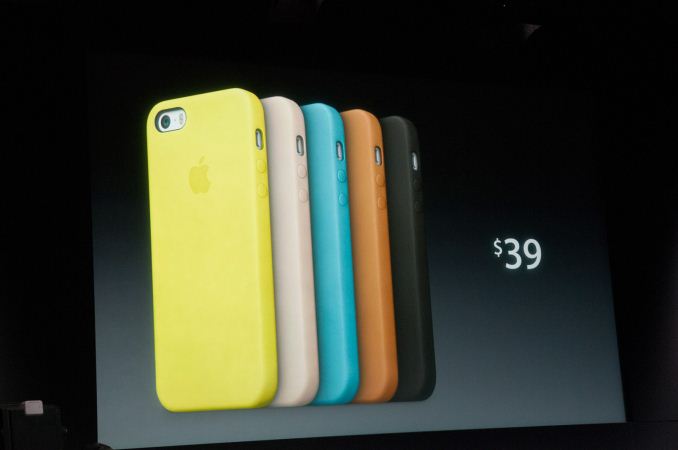
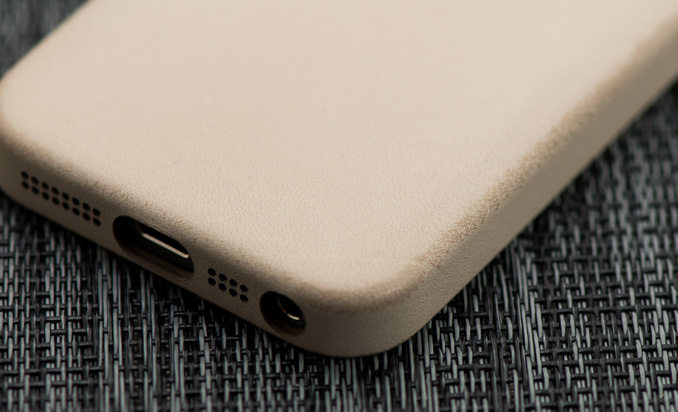
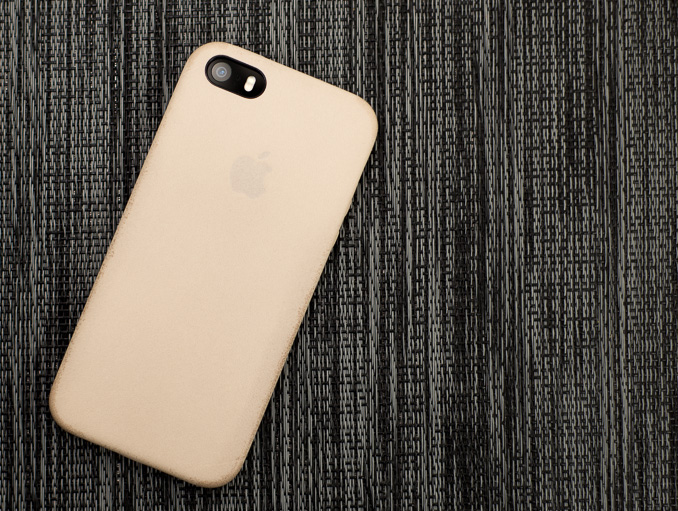








464 Comments
View All Comments
ddriver - Wednesday, September 18, 2013 - link
My basis for this conclusion is how the article is structured, the carefully picking of benchmarks and selective comparisons. This is clearly visible and has nothing to do with the actual chip specifications. It has nothing to do with execution mode specific details. So no, I don't have problem with facts, unlike you.Furthermore, that 30% number you were focused on is hardly impressive and proportional to the claims this article is making. In a workload that would take an hour, 30% is a noticeable improvement, but for typical phone applications this is not the case.
Dooderoo - Wednesday, September 18, 2013 - link
The structure of the article and the benchmarks are mostly the same as they use in most reviews, excluding some Android specific benchmarks. Where exactly do you see "carefully picking of benchmarks and selective comparisons". Put differently: what benchmarks should they include to convince you there is no "cunning deceit" at work?What claims in the article are not proportional with the 30% (actually more) performance gain?
I won't even comment on the "not a noticeable improvement" bit.
andrewaggb - Wednesday, September 18, 2013 - link
My issue with all the benchmarks is that they are mostly synthetic. The most meaningful benchmarks are the applications you plan to use and the usage patterns you are targeting. Synthetics are fascinating, but I think it's generally a mistake to buy anything based on them.notddriver - Thursday, September 19, 2013 - link
Um, so if a 30% improvement is hardly impressive and irrelevant to phones, then isn't the entire concept of reviewing phones on the basis of hardware performance also irrelevant? Which would make your complaints about the biased-yet-insignificant-review as vital as a debate over whether Harry Potter or Spiderman would be better at defending Metropolis.Incidentally, my iPhone 5 is powerful enough that I never notice any issues—as I'm sure the last generation of Android phones would be. But if your going to go to town over a dozen or more comments about a topic, at least pretend that it matters a tiny bit. Just good form.
oRdchaos - Wednesday, September 18, 2013 - link
I've seen people all over the web get very worked up about people's phrasing with regard to 64-bit. Would you prefer the title of the section were "Performance gains from a 64-bit architecture and the new ARMv8 instruction set"? People keep arguing that 64-bit in a vacuum doesn't give much performance gain. But there is no vacuum.I think the article is very clear to point out where gains are from additional instructions, versus a doubling of the register bit width, versus improved memory subsystem/cache. I'm sure when they get chances to write more of their own tests, they'll be able to pinpoint things further.
sfaerew - Wednesday, September 18, 2013 - link
engadget is multi-thread geekbench performance. tegra4 4cores vs A7 2coresSpoony - Wednesday, September 18, 2013 - link
- You are correct, there are no native cross-platform benches used. Which ones do you suggest Anandtech use? We all know Geekbench is essentially meaningless across platforms.- If you are talking about this engadget review: http://www.engadget.com/2013/09/17/iphone-5s-revie... It appears that Nvidia SHIELD (Tegra 4) led in only one benchmark out of six. This makes your statement incorrect. LG G2 is more competitive. Need we repeat how inaccurate Geekbench is cross-platform. It is as apples-to-oranges as the JS tests.
- I believe what Anandtech was attempting to show with the encryption was the difference ARMv8 ISA makes. In fact the title of that somewhat sensational chart is "AArch64 vs. AArch32 Performance Comparison". So while you are right, the encryption tests are handled in a fundamentally different way, that way is part of the ISA and is an advantage of AArch64, and thus is valid in the chart.
- It will be curious to see whether Qualcomm can deliver A7 like performance using ARMv7 with extended features. My position is no, which is the whole point of that entire page of the review. ARMv8 is actually enabling some additional performance due to ISA efficiency and more features.
- I think noticeable memory footprint bloat of a 64-bit executable is completely ridiculous. But to see if I was right, I did some testing. It's getting a bit hard to find fat binaries to take apart these days, most things are x86_64 only. But I found a few. I computed for three separate applications, took the average, and it looks like about a 9% increase in executable size. Considering that executables themselves are a tiny part of any application's assets, I think it is completely insubstantial. If you calculate the increase in executable size versus the size of the whole application package, it averages to a less than 1% increase.
I too am a bit sad that Apple didn't increase the RAM, and also equally sad that connectivity was left out this rev. I continue to be sad that there is not a more serious storage controller inside the phone. You make some valid points, but I think you also make some erroneous ones. The question with phone SoCs is: Is this a well balanced platform along the axes of performance (GPU and CPU), power consumption (thus heat), and features. I believe that the A7 is well calibrated. Obviously Qualcomm is also doing great work, and perhaps their SoCs are equally as well calibrated.
ddriver - Wednesday, September 18, 2013 - link
- This is entirely his decision, considering writing those reviews is his job, not mine. He can either use actual native benchmarks which reflect the performance of the actual hardware, or call it JS VM performance instead of CPU performance, because different JS implementations across platforms are entirely meaningless.- there is only one geekbench test at engadged. That is what I said "geekbench" - I did not imply it was faster in all tests in the engadged review, I don't know why you insinuate I did so. IIRC snapdragon 800 is actually a little slower in the CPU department than tegra 4, and only faster in the graphics department.
- the boost in encryption is completely disproportional to other improvements and is due to hardware implementations, not 64bit execution mode. So, if anything, it should be a graph or chart on its own, instead of using it to bulk up the chart that is supposed to be indicative of integer performance improvements in 64bit mode.
- maybe v7 chips with 128 bit SIMD units will not deliver quite the performance of A7, because there is more to the subject than the width of the registers (the number of registers doesn't really matter that much), like supported instructions. At any rate, v7 chips are still quad core, which means 4x128bit SIMD units compared to the 2 on A7, albeit with a few extra supported instructions. Until any native benchmark that guarantees saturation of SIMD units pops out, it will be a foolish thing to make a concrete statement on the subject. But boosting v7 SIMD units to 128bit width will at least make it competitive in number crunching scenarios, which use SIMD 99% of the time.
- this is very relative, you can store the same data in three different containers and get a completely different footprint - a vector will only use a single pointer, since it is continuous in memory, a forward list will use a pointer for every data element, a linked list will use two. Depending on the requirements, you may need faster arbitrary inserts and deletions, which will require a linked list, and in the case of a single byte datatype, a 32bit single element will be 12 bytes because of padding and alignment, while in 64bit mode the size will grow to 24 bytes, which is exactly double. Granted, this is the other extremity of the "less than 1%" you came up with, truth is results will vary in between depending on the workload.
As I said in the first post, the wise thing would be to reserve judgement until mass availability, mostly because I know corporate practices involving exclusive reviews prior to availability, which are a pronounced determining factor to the initial rate of sales. In short, apple is in the position to be greatly rewarded for imposing some cheating requirements on early exclusive reviewers. And at least in this aspect I think everyone will disagree, apple is not the kind of company to let such an opportunity go to waste.
ddriver - Wednesday, September 18, 2013 - link
*no one will disagreeDug - Wednesday, September 18, 2013 - link
I will."As I said in the first post, the wise thing would be to reserve judgement until mass availability, mostly because I know corporate practices involving exclusive reviews prior to availability, which are a pronounced determining factor to the initial rate of sales. In short, apple is in the position to be greatly rewarded for imposing some cheating requirements on early exclusive reviewers. And at least in this aspect I think everyone will disagree, apple is not the kind of company to let such an opportunity go to waste."
Prove it and stop making assumptions.